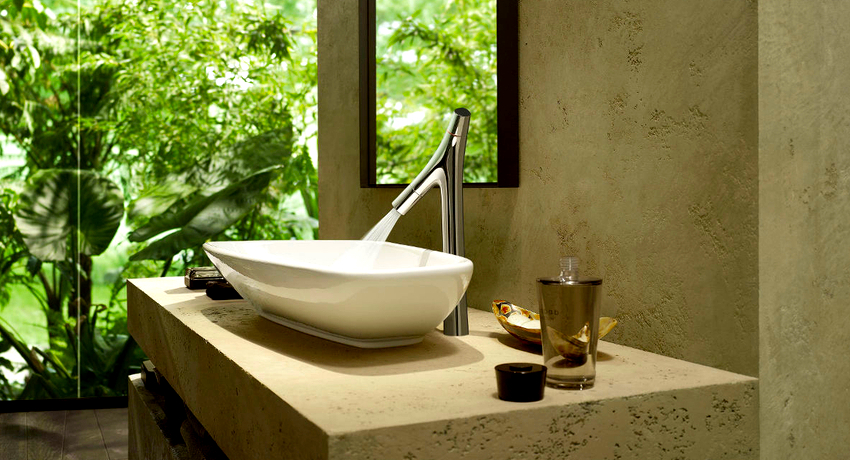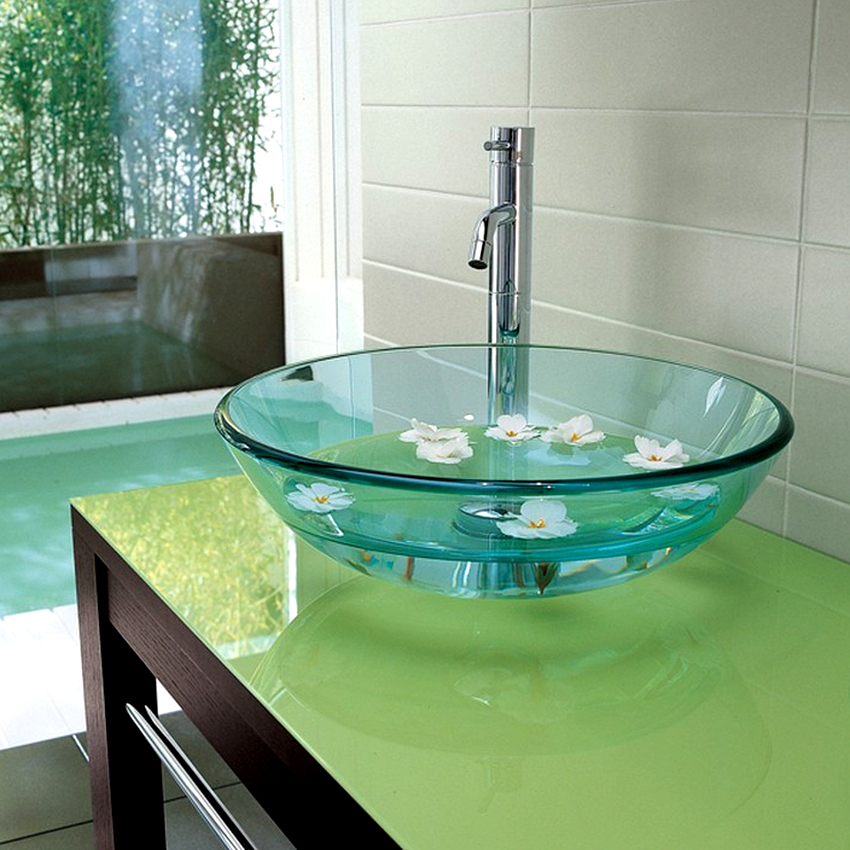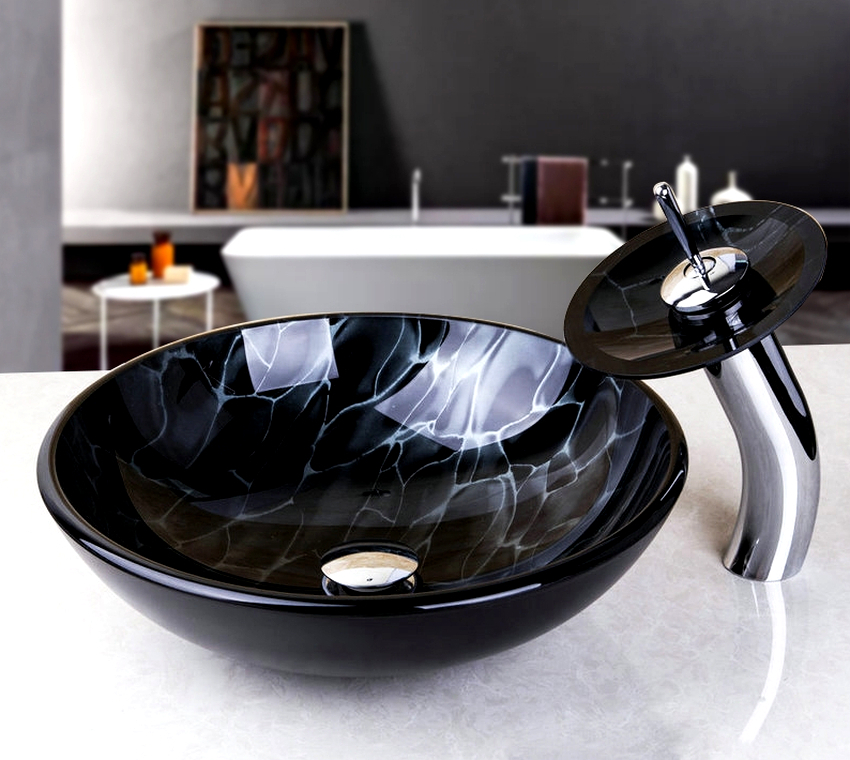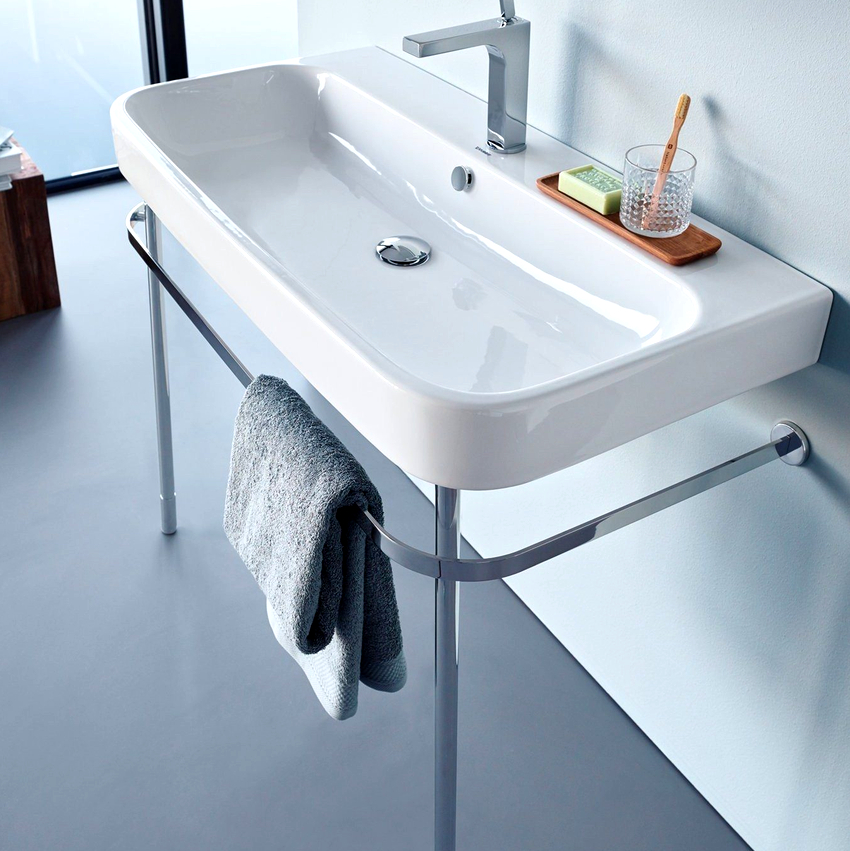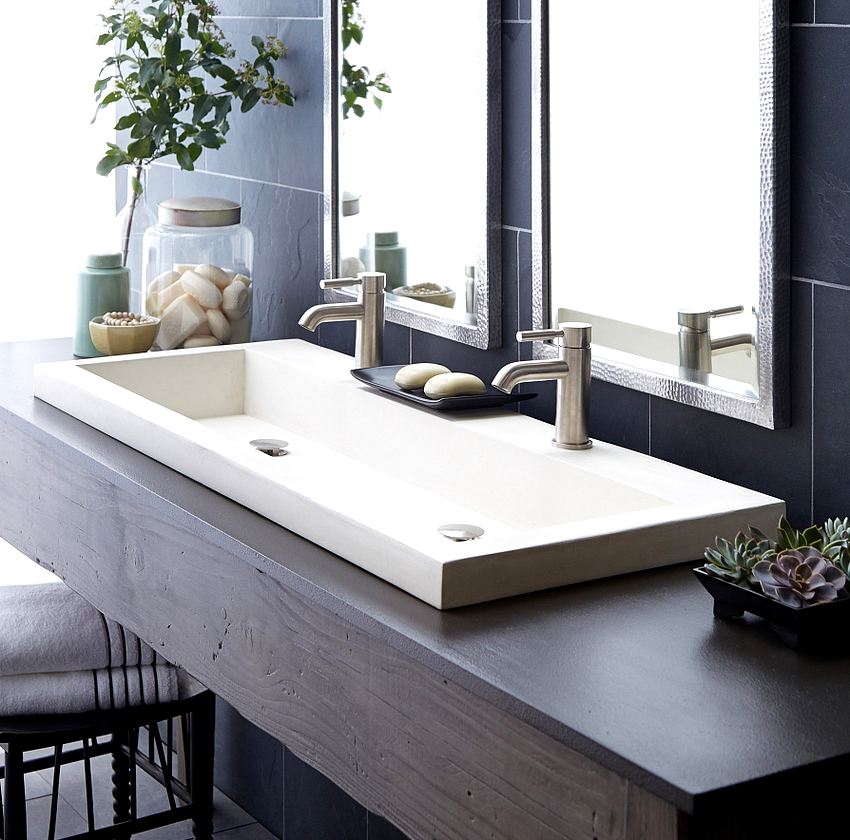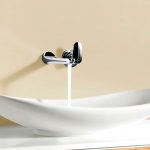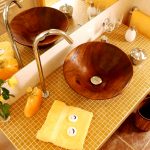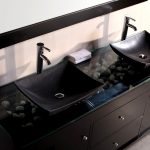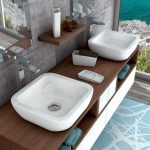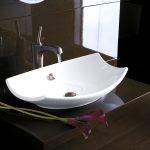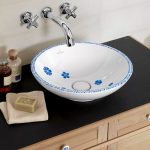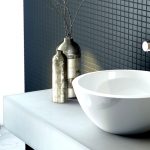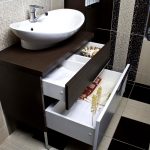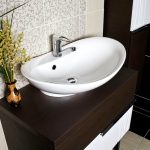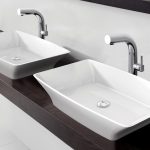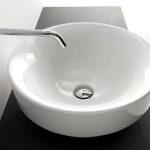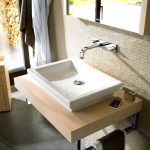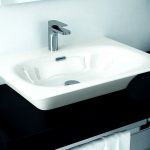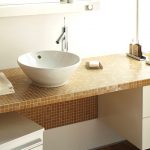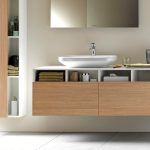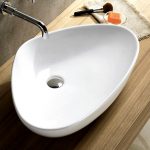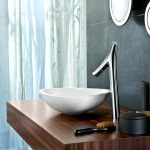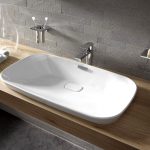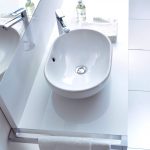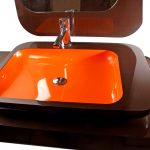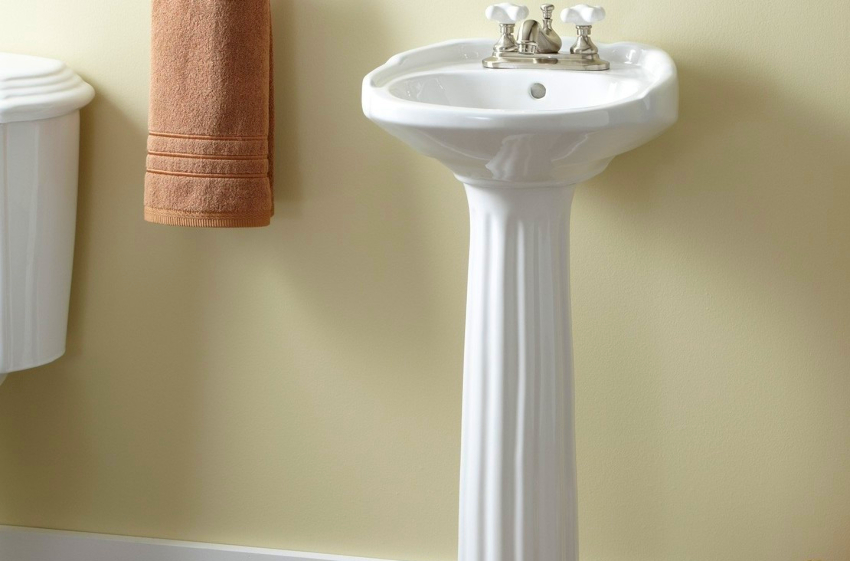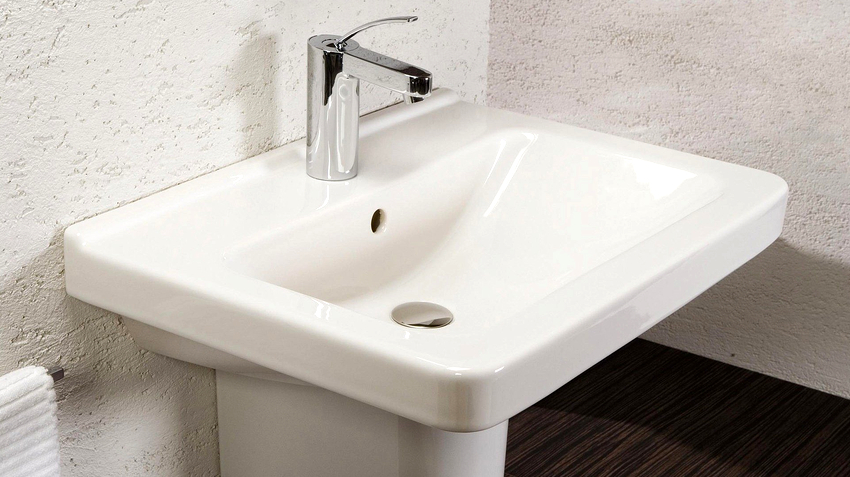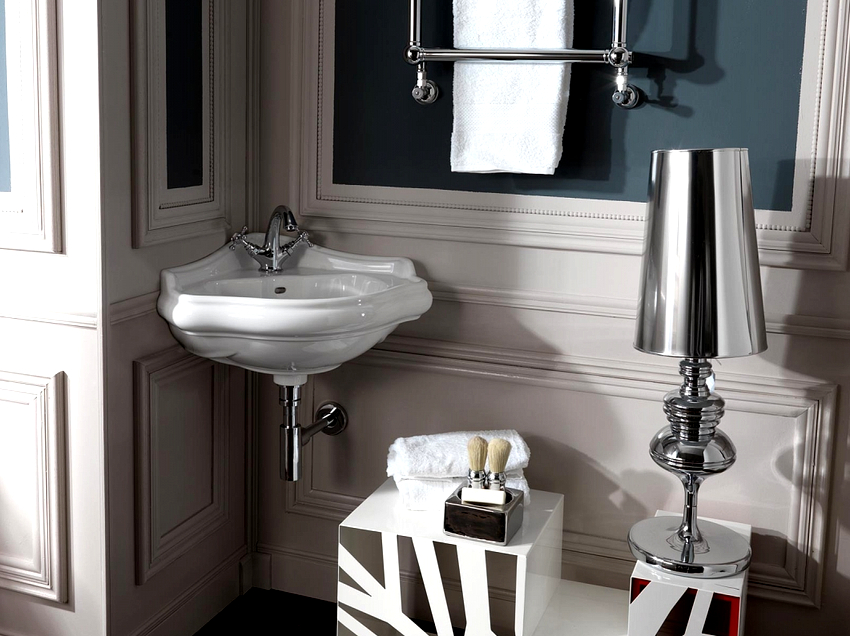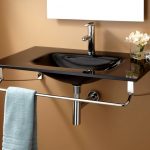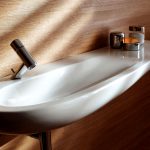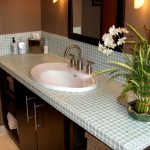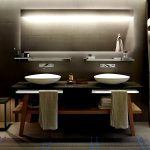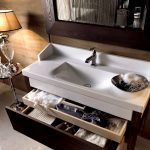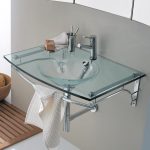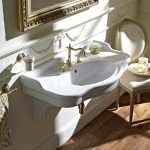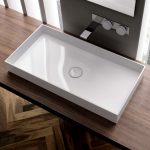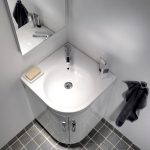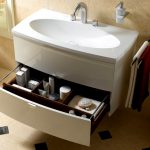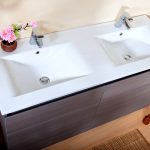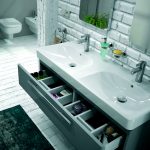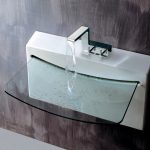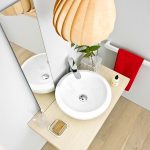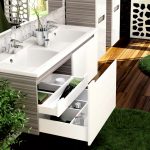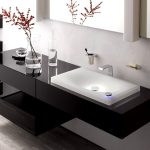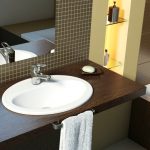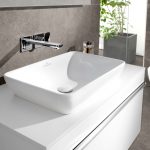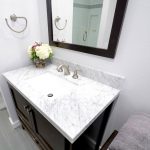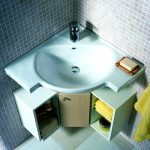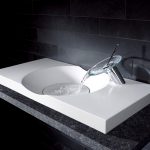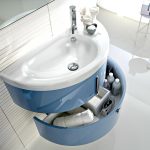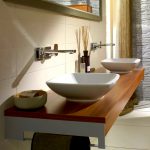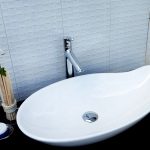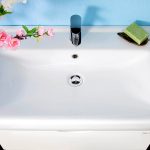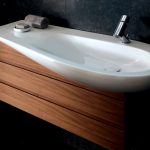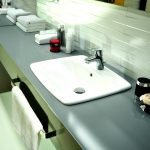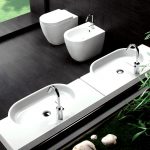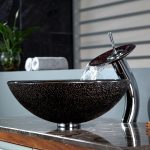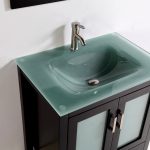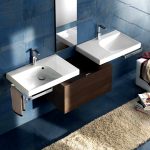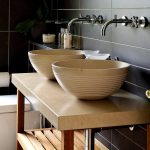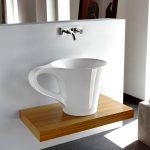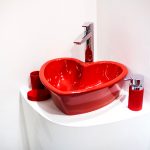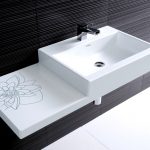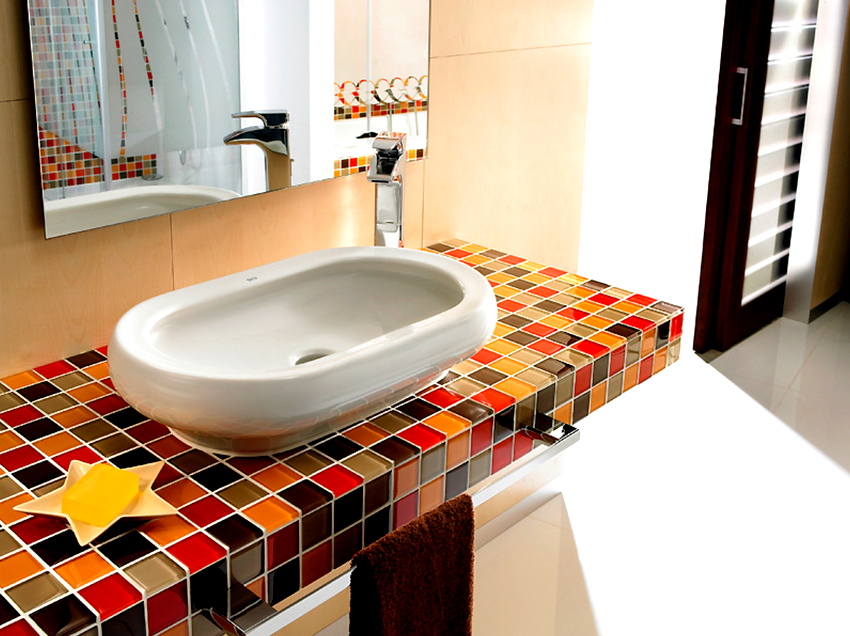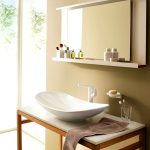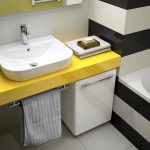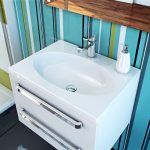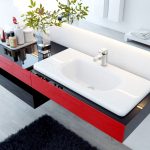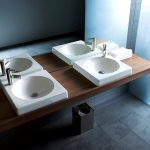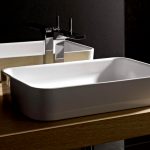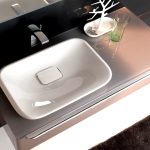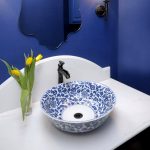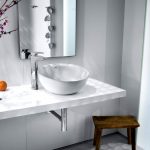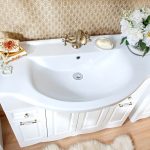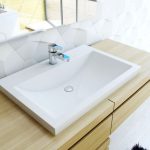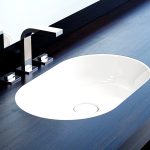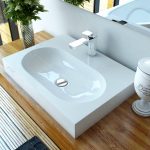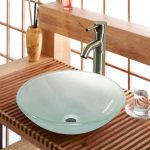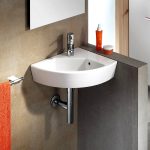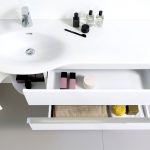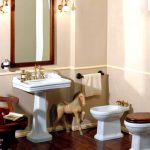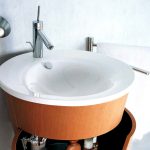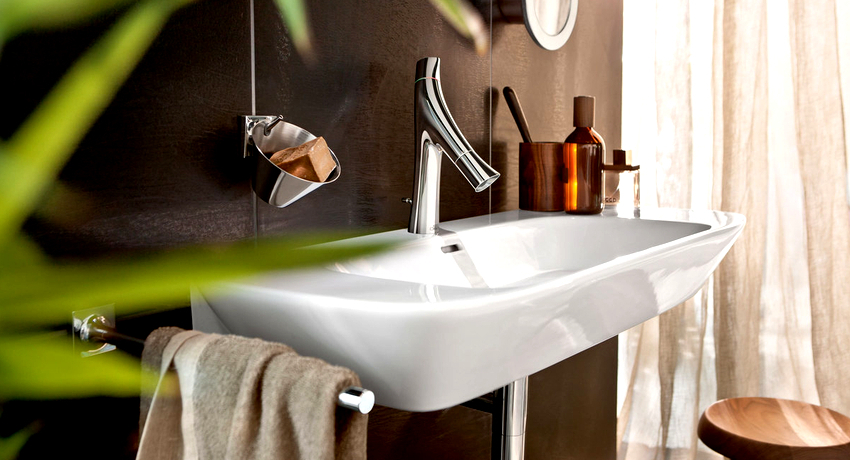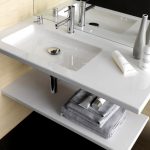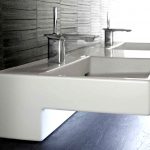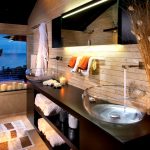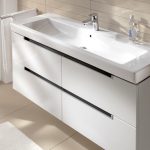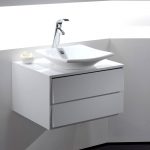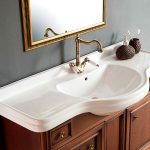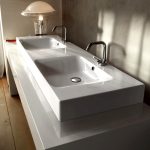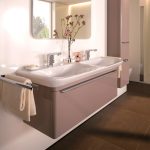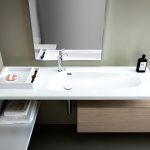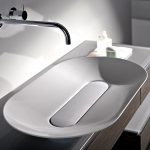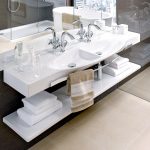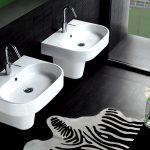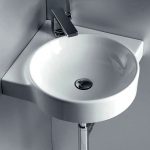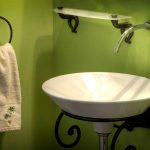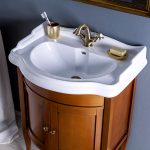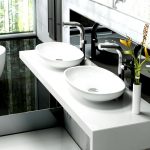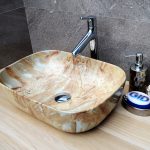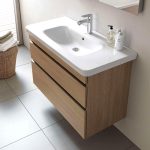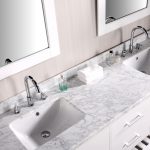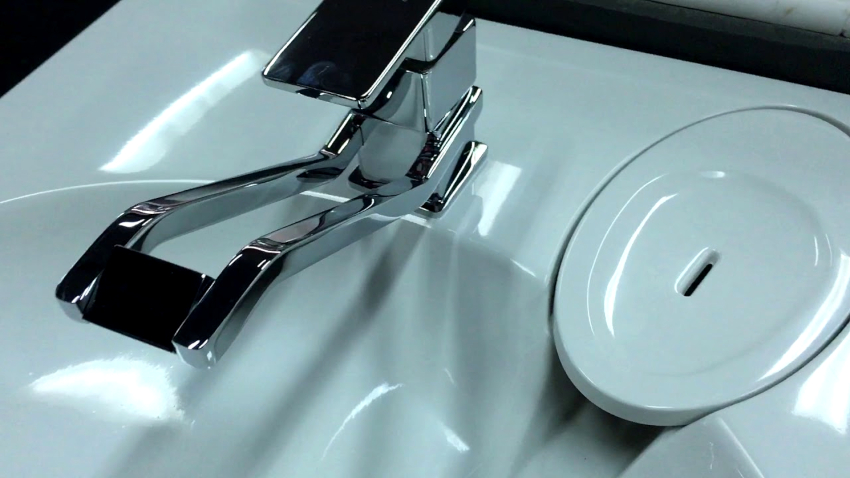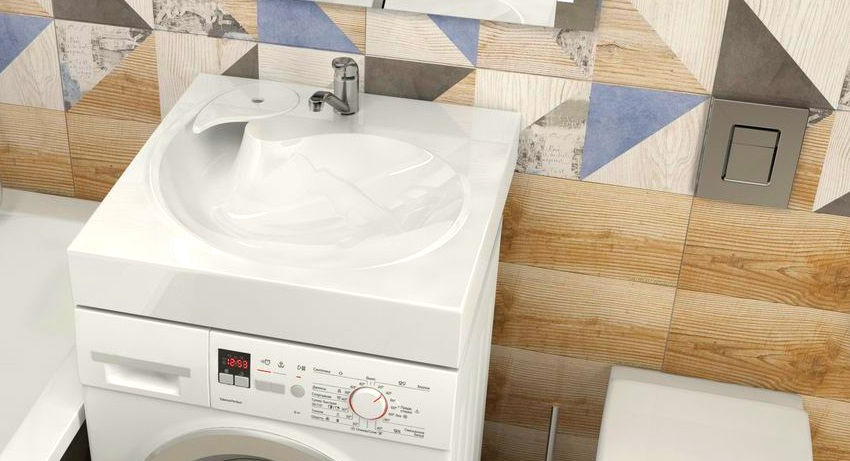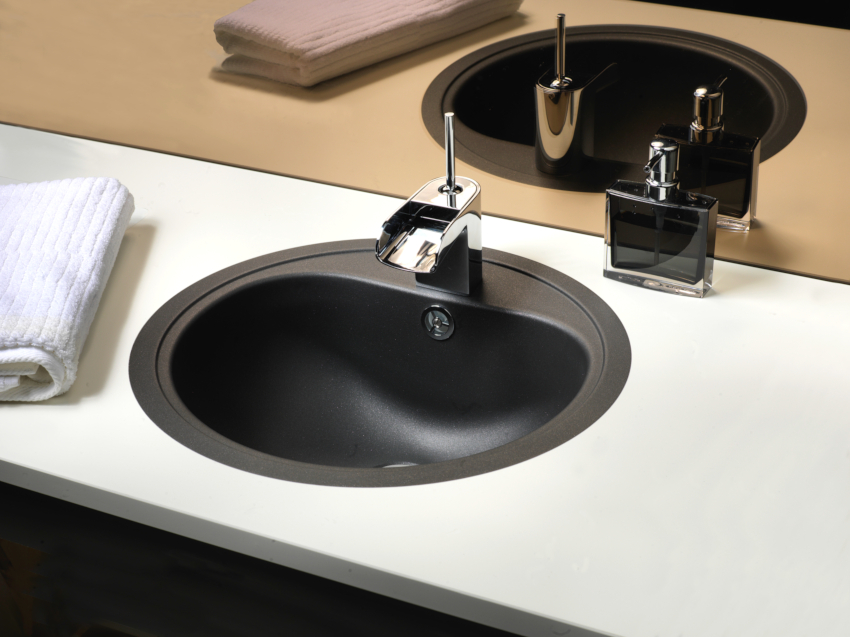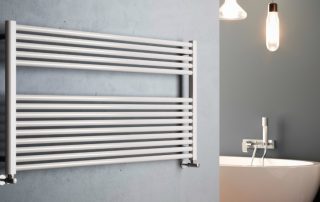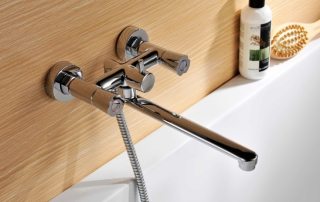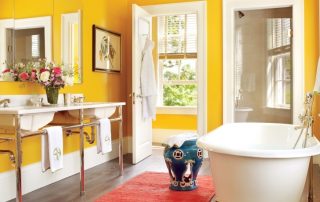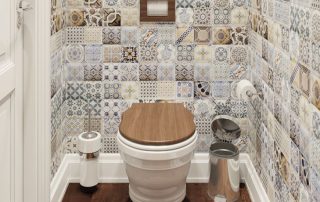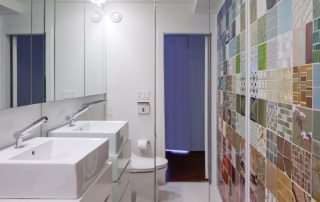A departure from the typical, the standard is a progressive feature of our time. The desire for originality has come to full scale in the world of plumbing. Why not perform water treatments in a pleasant environment? The question is rhetorical. But such an environment must be created. One of the important elements of the interior is the sink in the bathroom. About what models exist, how they differ and are characterized, in the materials of the article.
Content [Hide]
Bathroom sinks: a variety of models, materials for production
The main purpose of the bathroom is sanitary. One of the hygiene procedures, that is, washing, requires a special sink. Some, due to the small size of the room, refuse this type of plumbing and use faucets above the bathroom. It should be noted that such a decision is erroneous, and there are quite a few arguments proving this.
First, the inconvenience of use. The faucet spout over the bathroom is located low, you need to bend over, water splashes from your palms.
Secondly, during washing, drops of water with detergents and toothpaste scatter over a fairly large area, which complicates cleaning the surface.
Thirdly, with such an organization of washing, it is difficult, or rather, almost impossible, to hang the mirror in the desired position.
The variety of existing models allows meeting any demand. You can purchase a sink for a countertop in the bathroom, built-in, surface-mounted, wall-mounted, large or small.
The main materials from which modern washbasins are made are:
- porcelain;
- faience;
- ceramics;
- glass;
- metal;
- a rock;
- polymers.
The material used for the manufacture greatly affects the size.Porcelain and faience sinks have thick walls, they are more voluminous. Glass and metal products are compact. Stone sinks, although made of a thick layer of material, usually have an original shape that allows you to place this plumbing in small bathrooms.
Possible ways to install bathroom sinks
There are several ways to install sinks. Before answering the question of how to install a sink in the bathroom, it is necessary to harmonize the wishes and existing technical conditions. Pay attention to the following:
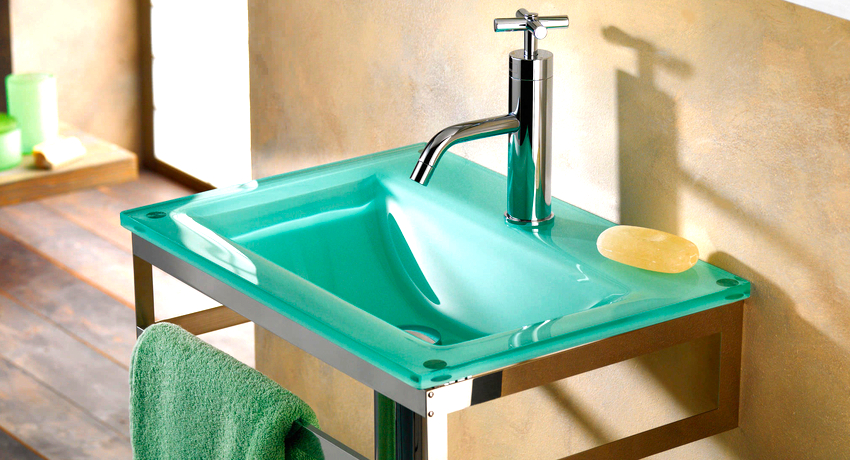
The main ways to install sinks are hanging, flooring, cutting into a countertop, or installing on a countertop
- whether there will be obstacles and difficulties in the process of summing up communications;
- will the wall material allow the necessary fastening;
- whether the approach to the sink will be convenient.
Basic ways to install sinks:
- Hanging. Such washbasins are also called console. They are attached to frames or brackets.
- Floor installation. This option is called "tulip", that is, there is a supporting leg in the structure.
- Cutting into the tabletop.
- Installation on a table top.
We should also highlight the washbasins, which are mounted in the corners of the room. Such products also have an appropriate shape. It can be both floor-standing and pendant models. If the design has a countertop, then it is she who is made angular, the sink can be round, oval or square.
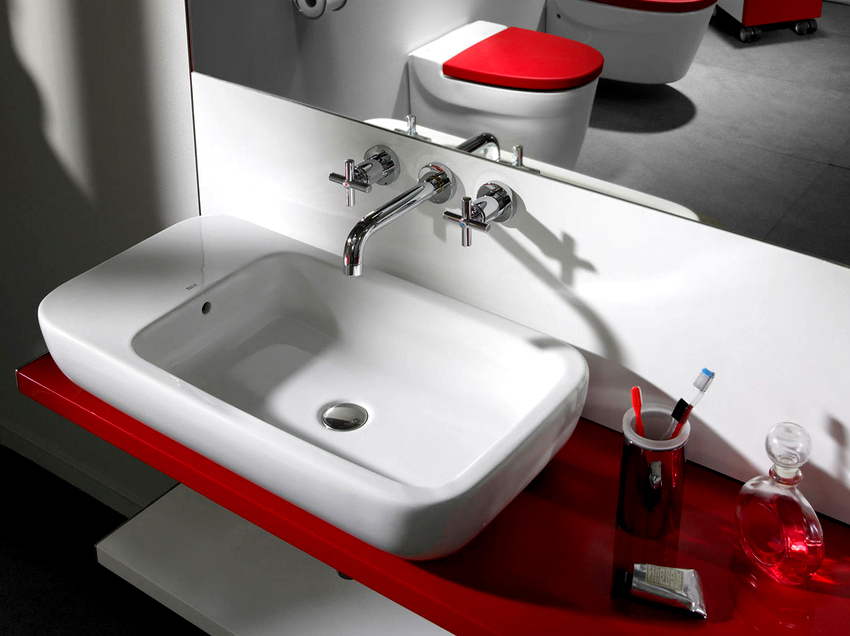
Before choosing a bathroom sink, you need to pay attention to the wall material, whether it will allow you to perform the necessary fastening
The bathroom sinks above the bathtub also deserve special attention. Such products are usually hanging, their shape follows the outline of the bath in the area where the washbasin is hung. With this installation method, it is important to properly equip the drain: hide it in the wall as much as possible, or purchase a neat metal half-siphon. The latter is quite acceptable when using plumbing for washing.
Useful advice! If the house (or apartment) has more than 5 residents, it is worth installing two sinks. Otherwise, problems cannot be avoided during rush hour.
Versatile: wall-hung bathroom sink
Hanging sinks have long been virtually the only option. These models have many advantages:
- are simply made;
- easy to install;
- are inexpensive;
- compact;
- appropriate in rooms of any size.
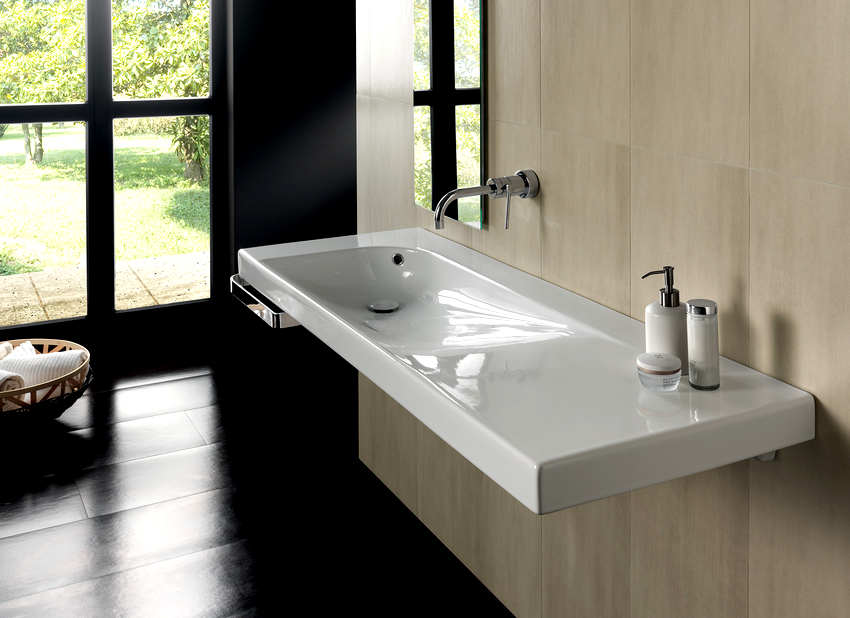
Hanging sinks have a lot of advantages, they are easy to install, have compact dimensions and low price.
Modern hinged sinks differ significantly from the classic Soviet washbasins. First of all, the forms have changed, or rather, their great variety has been added. Manufacturers produce not only rectangles with rounded corners, but also ovals, squares, asymmetric quadrangles, "drops", etc.
Modern models are also freed from bulky, unaesthetic open communication elements. Today it is a neat pipe bend with a nice glossy finish. He not only does not spoil the appearance, but also plays the role of a design addition to the structure.
Such sinks are installed on brackets. Usually mounted models have bumpers that serve to accommodate various hygiene items on them, and also allow you to hide fastening devices. Hanging on metal frames is also possible. In fact, these are modernized brackets. The advantage of this type of attachment is the presence of a horizontal pipe in the area under the sink, on which you can hang a towel: when unfolded, it dries well, the main structure of the washbasin protects from water drops.
Wall-hung sinks are especially appropriate in small bathrooms.The constructions are compact, laconic, do not clutter up the space either visually or in fact.
Variants of placing sinks in the countertop in the bathroom
Bathroom countertops are equipped for various reasons. Some people prefer to have a significant amount of horizontal space to accommodate various items. Someone seeks to organize a separate area, installing all the floor elements under the tabletop: cabinets, an automatic machine, shelves, leaving the rest of the space free. For many, the countertop is an interesting element of the interior.
In these cases, a countertop washbasin is used. And here there is no limit to creative imagination and imagination: you can purchase a washbasin of the original form and place it in the center or with an offset to one side.
For built-in sinks, two types of installation can be distinguished:
- With partial recessed bowl. The main part of the washbasin is immersed in the cut-out hole, while the sides lie on the countertop. The installation process is simple, the fastening is durable; tight contact of the edge of the sink with the countertop, fixed with a sealant, prevents moisture penetration.
- Integration. The bowl is installed under the table top (integrates), does not protrude above the horizontal surface.
The second option can be attributed to a more aesthetic and original way. But the installation is much more complicated, more troublesome and more expensive. And the cost of built-in bathroom sinks in this way is significantly higher.
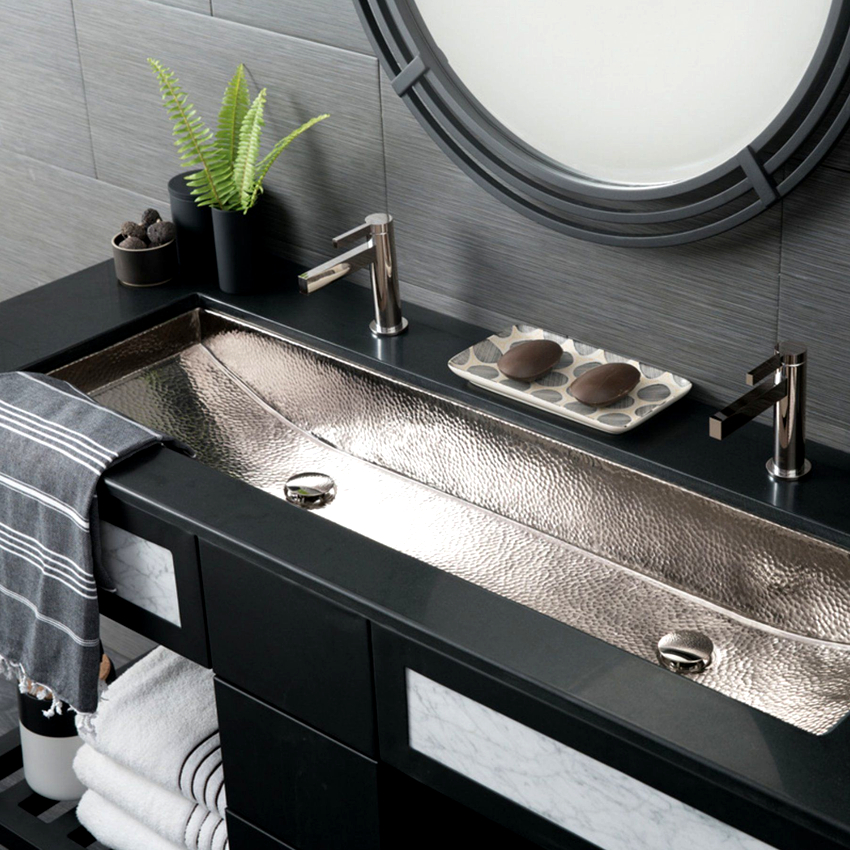
Built-in sinks have two types of installation: with partial sinking of the bowl and placement under the countertop
Useful advice! For the normal functioning of the sink built into the countertop, it is very important to choose the right material for the latter. It is better not to use wood boards, since it is extremely difficult to ensure long-term moisture resistance of the inner cut of the sink hole.
Compact and original: overhead washbasins for bathrooms
The entire range of materials used for the manufacture of sinks is manifested precisely in the overhead models. It should be noted that these options have appeared on the plumbing market relatively recently. The main advantage of placing the sink on the countertop is the interesting interior. Washbasins with this type of installation are distinguished by oversized designs, therefore, they are applicable in rooms of any size. Compactness is largely ensured by the absence of side walls and wall thickness. Even this type of porcelain and earthenware is much thinner than similar hanging and floor options.
Among the overhead washbasins, there are many models made of glass, both colored or matt, and transparent. Most often they are installed on a glass tabletop. This combination makes the structure lightweight, interesting, often turning it into a central element of the interior.
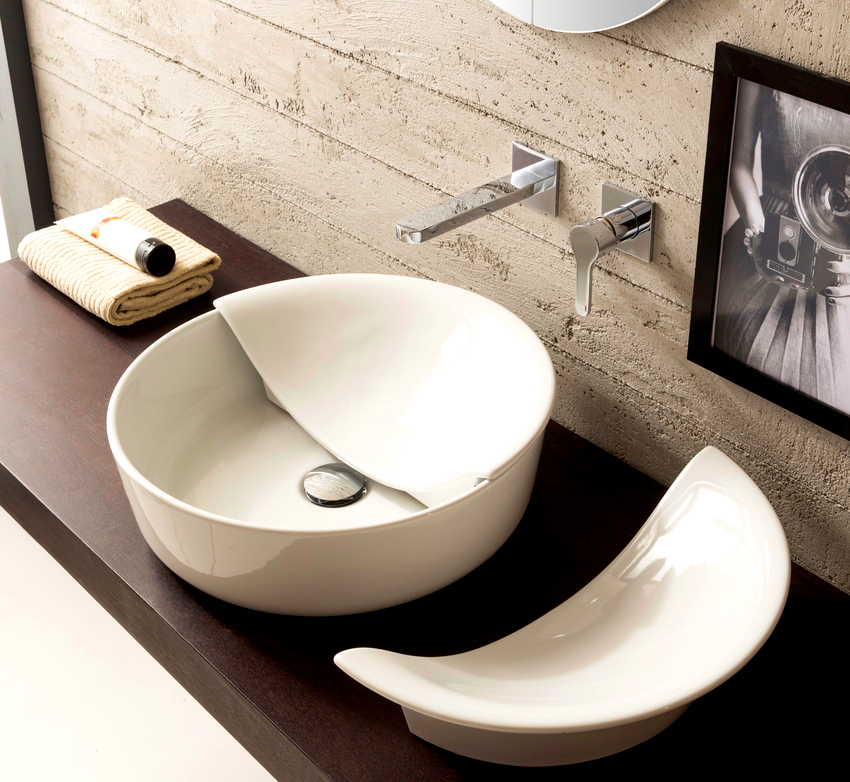
Installation of a countertop washbasin is a very simple process that even an inexperienced specialist can handle.
It is also worth noting that the installation of an overhead sink in the bathroom is a simple process that can be dealt with without special knowledge and skills. The bulk of the thicket rests on the countertop.
Related article:
Sink with a vanity unit in the bathroom: a convenient and functional element of the room
Varieties of construction. Design features and benefits. Installation of washbasins with a vanity unit. Popular models.
Designs can be both light, with decorative design, and laconic, but rather massive. The latter characteristics are inherent in rectangular and square sinks made of stone, porcelain or faience.
Overhead washbasins, together with countertops, can be installed along walls or in a corner. An insular position is also possible, if there are no difficulties with bringing communications.
Free-standing washbasins in the bathroom: the main advantages
Floor-standing models include washbasins that have a vertical lower support, the so-called "leg". It has two functions:
- supports the thicket;
- hides communication elements.
For its external resemblance to a flower (the opened petals form a bowl), this type of washbasin is called "tulip".
Until recently, all "tulips" looked about the same. They had a rectangular bowl with rounded corners or an oval protruding part and a pedestal leg expanding up or down, or straight.
Today the assortment is much more diverse. Products began to be made not only from the above materials, but also from stone and glass. And the appearance of various modifications for sinks in the bathroom made the design of such sinks much more interesting.
Among the products offered by modern manufacturers are floor sinks in red, black, blue and other colors. The demand for white shells is not decreasing either. The advantage of this color is that it is easy to match other plumbing fixtures to it: toilet, bidet, bath.
Glass models can have a transparent bowl and a matte rectangular leg. This option is organic for loft, hi-tech, minimalism styles. For classic bathrooms, options from natural or artificial stone are suitable. It should be noted that products made of natural stone are not on sale in large quantities, but it is quite possible to find an exclusive model.
Useful advice! The design of the tulip sink is the most compact. Sometimes it is not worth chasing newfangled models, but choose an option among classic products with an original design.
Corner sink in the bathroom: what to consider when installing
Looking through the Internet product catalogs on selling sites, you can see that among this type of plumbing, such as washbasins, corner models make up 5-7%. And this is no coincidence. Despite the external appeal, the choice of such an option should be approached thoughtfully and responsibly. Occupied corners do not always contribute to the visual release of space.
It is very important to choose the right corner sink for the bathroom. And here it is useful to use the following tips:
- If the room is critically small, it is worth purchasing a small hanging model and leaving free space under the sink. It is more expedient to place cabinets and shelves above the sink.
- When installing a corner model in rooms with a complex layout, for example, in a wide niche, it is appropriate to install a built-in model with a curbstone with a rounded facade.
- Sinks with rectangular pedestals located on either side of the corner are acceptable for rooms with sufficient free space.
- An excellent option for a corner sink for a rectangular bathroom with a large difference in sides can be an asymmetric model identical to the shape of the room, where the bowl is elongated along one of the corner walls.
Corner sinks in the bathroom can be installed in all existing ways and have a wide variety of shapes. During placement, it is also important to ensure free access and a comfortable body position. The feeling of limited space significantly reduces the level of comfort.
Sizes of washbasins: technical and aesthetic aspects
A very important characteristic of a washbasin of any shape and type of installation is its size. This indicator has both technical and aesthetic sides. If a large sink is installed in a small room, it not only takes up a lot of space, but also spoils the interior with its bulkiness.Conversely, the original miniature model will "get lost" in the free space of a large room.
Choosing a washbasin size proportional to the size of the room is an important condition for creating an interesting interior and ensuring a feeling of comfort. To a large extent, the ergonomics of the zone as a whole depends on the size. The need to reach, bend significantly, constantly monitor the position of the hands complicates the washing procedure, strains the psyche and reduces a positive emotional mood.
Unfortunately, the ever increasing trend towards improving the design of sinks to a certain extent has led some manufacturers to deviate from the dimensional standards in the manufacture of products. And this cannot but affect the usability. This is especially reflected in exclusive models.
Important! When choosing a sink of the original form, you should definitely analyze and evaluate the process of its use. Multilevel edges can add originality to the product, but it is almost impossible to use such a sink without significant splashing of water outside of it.
Based on the size of the sink, the bathroom can be divided into the following types:
- full-size products;
- mini sinks, compact;
- extended (more often due to additional horizontal surfaces);
- exclusive options.
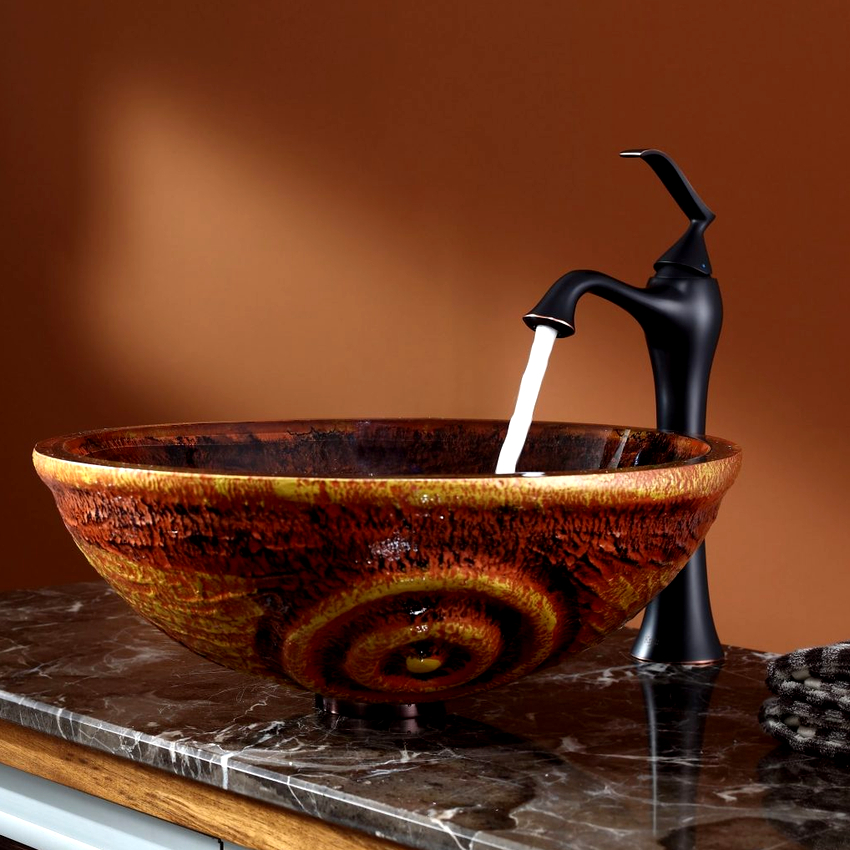
When choosing a sink of the original shape, it is necessary to evaluate and analyze the process of its use.
Before purchasing a washbasin, it is imperative to measure the part of the room where the installation is planned.
Bathroom sink height: standard and possible variations
One of the dimensions of the shell is its height. The distance from the floor to the upper point of the outer edge is taken into account (on some models, the part of the sink in the area where the mixer is installed can be raised). The optimum dimensions for the bathroom sink, in particular the height, are specified in the relevant document. According to SNiP 3.05.01-85, it should be 80-85 cm, deviations are allowed by 2 cm.
Modern manufacturers easily trample the established (in fairness, it should be noted that a very long time ago) norms, based on third-party opinions and their own research, and increase the height of products to 92 cm, and sometimes even more.
Suspended and flush-mounted models without pedestals can be installed at the desired height, taking into account the physical characteristics and preferences of users. Usually the height of all adult users is summed up and the average is displayed. Steps can be purchased for children; quite a few of them are offered in plumbing stores.
It is more difficult with floor models and countertops with pedestals. These bathroom sinks have fixed dimensions and most often cannot be adjusted. Theoretically, it is possible to reduce the leg, but this will not do without the use of special equipment and the loss of aesthetics - only the lower part can be shortened, which means that the proportions will be violated, the design idea will be distorted. Some cabinets with worktops have adjustable legs, which allow to increase the height of the structure by a maximum of 4 cm.
Therefore, when choosing a sink with a fixed height, you must first determine the required size.
Optimal sink depth for the bathroom
As for the depth of the sink, it is determined by the distance from the upper edge of the bowl to the lower inner point, that is, the drain. There is no specific standard for this quantity. Many are guided by taste preferences, choosing a shallow or deep bowl. For example, it is better to purchase a built-in sink in the bathroom, which has a significant indicator - at least 18 cm.Otherwise, the external effect from such an arrangement of the sink is lost.
If the depth is less than 15 cm, it is unlikely that it will be possible to wash your hands under an intense jet of water without splashing outside the sink. When using a swivel spout, splashes can also occur when the flow is not directed into the drain area.
When marking products, some manufacturers indicate not the depth, but the distance from the uppermost point to the lowermost outer point of the bowl. This value is important when connecting communication taps.
For overhead bathroom sinks, in addition to performance, depth is also important as an interior component. Such designs are more often accent, therefore, correctly selected sizes will enhance or reduce the aesthetic value of the sink for the overall perception of the design.
Useful advice! If you need to make a choice between several products, it is worth considering that a deep bowl is much more convenient to use.
The length and width of the washbasins in the bathroom and the performance
Before trying to understand the values of the length and width of the shells, it is worth distinguishing between the indicators of the bowl itself and the product as a whole (taking into account the sides and other horizontal surfaces that make up the structure).
For integrated, built-in washbasins, these parameters are the same. Most often they are almost identical for round and oval overhead structures. For other models, the differences can be significant.
The distance between the lateral extreme points should be taken as the length, the width is determined by the segment connecting the central points on the front and rear edges of the shell.
Which sink is more convenient - wide or long? There is no definite answer to this question. These parameters are often selected in accordance with the design. For comfortable use, an internal central zone of at least 50x35 cm is required. There are sinks of much smaller dimensions, but their use is somewhat complicated precisely because of their size.
A recessed sink in a bathroom countertop, which has sides, may look quite large outwardly, but its functionality should be judged precisely by the length and width of the bowl itself.
It is quite difficult to determine the performance characteristics of corner sink models, depending on the length and width. That is why such products must be evaluated by the totality of all properties.
Smart use of space: sink with side drain
Sometimes the conditions in the bathroom are such that it is almost impossible to take into account the advice and recommendations for the selection and comfortable operation of sinks. There is only one option - installation on an automatic washing machine. Everything is not easy, since you need to purchase a special machine and a sink. Built-in and suspended options are not suitable - an invoice is required, but a special design.
First of all, you should choose an automatic machine of the appropriate size. It is required that the height does not exceed 70 cm, and the depth should be 15 cm less than the width of the shell. The last condition is mandatory for the organization of the drain The length must be the same, this will allow you to mount an aesthetic structure that looks monolithic outwardly.
Now about the sink. Most often these are flat models, the depth of which does not exceed 15 cm. In addition to the dimensions, a necessary condition is the presence of a side drain. It is this feature that allows you to place a specific sink over the machine.
There are two more nuances, they are as follows: if the front part is mounted on the same vertical level, the design will be more attractive, but it will not work to come close to the sink; when installing a sink in a bathroom with an overhang over a typewriter, it will be much more comfortable to stand even by 5–7 cm, but cumbersomeness will appear. Which problem is the lesser evil is a subjective opinion.
Helpful advice! When purchasing a sink with a side drain, you need to pay attention to the presence of a slope. Its absence will contribute to the accumulation of water and the formation of plaque.
Bathroom sink: rating of the best models
When choosing a sink for a bathroom, everyone wants to know what products are in demand. Such information provides an expanded understanding of plumbing, contributes to a more objective assessment. Below is a ranking of the best models.
5th place. Сersanit COMO 40. Compact original ceramic sink. Has a rectangular shape, can take an angular position. Placement of the mixer is side, there is overflow protection. The manufacturer positions the product as a wall-hung sink in the bathroom. But flush mounting is also quite acceptable.
4. Сersanit CITY 60. Model made of faience, characterized by warm white color. Central mixer installation, overflow control. The product is flat, sleek design, suitable for installation in countertops with cabinets.
3. Aquaton LAZIO 95. Artificial marble. Plumbing is highly durable. The bowl is complemented by wide, flat sides for ease of use. The washbasin can be hung or embedded.
2. Aquaton MILAN 80. The product is distinguished by its original design, characterized by smooth lines, side-mounted faucet and openings for overflow protection. Made of reconstituted marble. More suitable for installation in countertops.
1. Reginox Atlantis. Metal washbasin in the bathroom, built into the countertop. Manufacturing material - stainless steel. The round shape, the surface is matte, which makes the product presentable and partially hides traces of dirt and water. The product is durable, metal thickness - 1.2 mm.
The variety of plumbing options provides many ways of installation: integration with furniture, combination with household appliances, placement on the floor, fixing to walls. Among all the variety that seduces with design solutions, you must choose your own option, which will suit you with comfortable operation and an attractive appearance.
